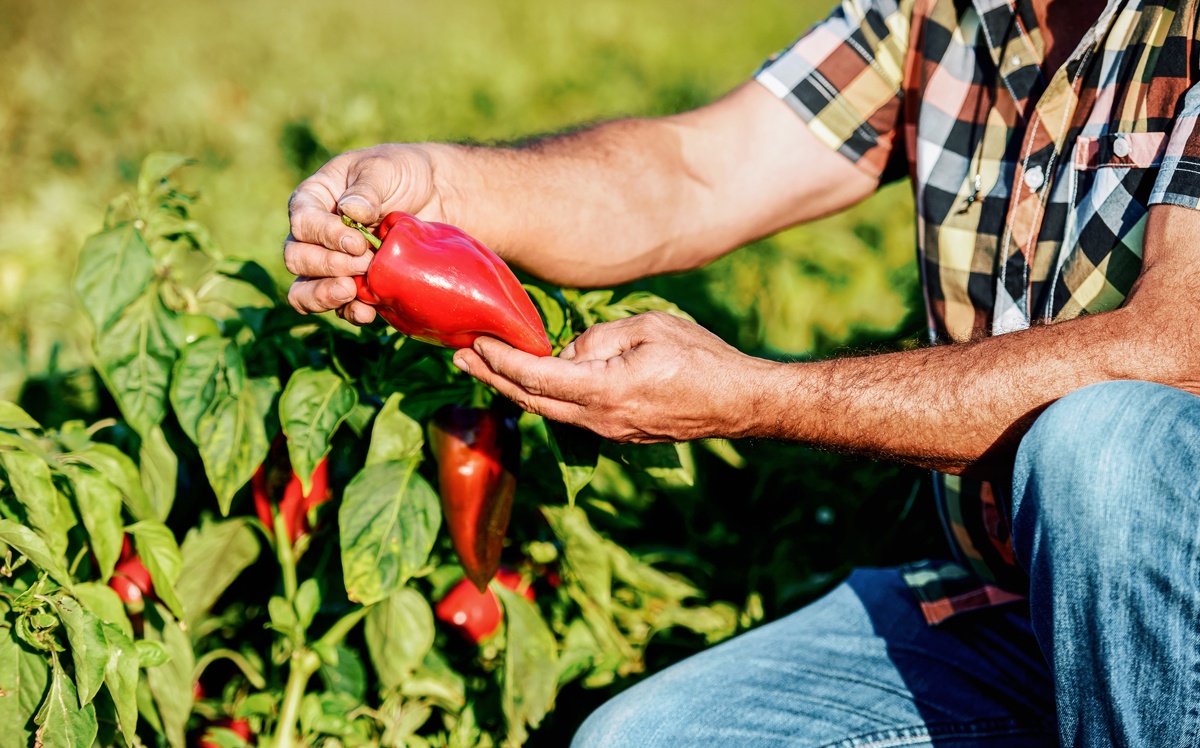Celebrating Latino (Hispanic) Heritage Month:
Latinos in Agriculture
The US celebrates Hispanic Heritage Month from September 15 to October 15. The start date commemorates the beginning of the Mexican War of Independence and the independence of most Central American countries and Chile from Spain. Conservation Minnesota recognizes this time as Latino Heritage Month, and here’s why.
The term “Hispanic” comes from the Spanish word “Hispano,” which refers to people whose cultural traditions originate from Spain and centers on European whiteness. Because the term doesn’t offer space for recognizing Indigenous and Black communities, especially those in Central and South America, many recognize and identify with the word Latino instead of Hispanic. We acknowledge that not everyone who celebrates this holiday identifies under the term Latino because one term could not possibly cover the rich culture, communities, countries, and languages that recognize this historical time of independence from colonization.
Recognizing The Work of Latino Farmers
This month, we want to celebrate and recognize the Latino community's contributions in Minnesota by highlighting Latinos' important role in agriculture. Of the 112,000 farmers in Minnesota, only 650 identify as Hispanic or Latino. Despite the lack of representation, Latino farmers are helping change the agricultural landscape through innovative practices.
“A huge portion of the state's ag workers are Latino, whether on dairy farms, meat processing facilities, harvesting sugar beets, whatever it might be. We wouldn't have an ag industry without the Latino workforce,” says Aaron Blyth from the Latino Economic Development Center (LEDC). These Latino agricultural workers are revitalizing rural Minnesota towns and have kept the agricultural economy moving throughout the challenges of the pandemic.
As the average age of a farmer in this country closes in on 60, many barriers and challenges face those who wish to enter an older, white male-dominated industry, especially for women and young farmers of color.
Land Access
The number one challenge that emerging farmers and ranchers face is access to land. Many new farmers struggle to find the capital needed to invest in land of their own or face barriers to entry, such as student loan debt or policies that support the development market over affordable farmland access. As an association of Latino entrepreneurs and leaders that helps to create economic opportunities for Latinos in Minnesota, LEDC works to reduce the historic marginalization in the industry by providing resources and guidance to new farmers.
Rodrigo Cala is a certified organic farmer who runs Cala Farm with his brother in Turtle Lake, Wisconsin. He works with LEDC to increase the number of Latino farmers and leads a beginning farmers training program that provides technical assistance for vegetable production, business development, and access to capital and markets.
According to Cala, the main barriers for Latino farmers are “access to land, access to capital, access to markets, language barriers, and climate change."
Developing Markets
Here in Minnesota, researchers are working with farmers to develop markets to enable Latino farmers to build a farm legacy for future generations.
University of Minnesota Extension educator Natalie Hoidal was working with a group of Latino farmers in Morris and noticed that much of what they were growing was going back to the Twin Cities to primarily white communities.
“I thought it would be really cool if we could find ways to grow more culturally relevant crops and keep them in the community,” says Hoidal, who then went on to help develop a program that helps farmers grow chili peppers in Minnesota.
Finding marketing opportunities as a Latino immigrant farmer is challenging as many have an accent or do not speak English, leading to communication barriers in many markets. By carving out a space for farmers to be successful, they can start to find their footing in the market.
“Our big goal isn't necessarily that everyone is growing peppers. The goal is that people can find ways to be profitable, growing the crops that they want to grow,” says Hoidal.
Growing a Future
Agriculture is the second whitest profession in America, but much of its immigrant labor keeps the industry afloat. By providing opportunities for new immigrants and emerging farmers to access land, we can begin to change that.
“I think we all know there is a farm crisis in Minnesota and the nation in general. And I think this ready workforce wants not just to know how to do the work but wants to be owners and entrepreneurs. And we have to find ways to give them the ability to do that,” says Blyth.
The Minnesota Department of Agriculture’s Emerging Farmers Program addresses barriers preventing new farmers from entering the field, especially from underrepresented communities. It’s estimated that in the coming years, as many as 400 million acres of farmland will need new farmers to care for the land. To keep these acres in agriculture production, programs like the state’s Emerging Farmers initiative are vital to the success of our farm economy. Supporting innovation in programming and funding the resources necessary to build these land-based businesses will help the future of agriculture thrive in Minnesota.

